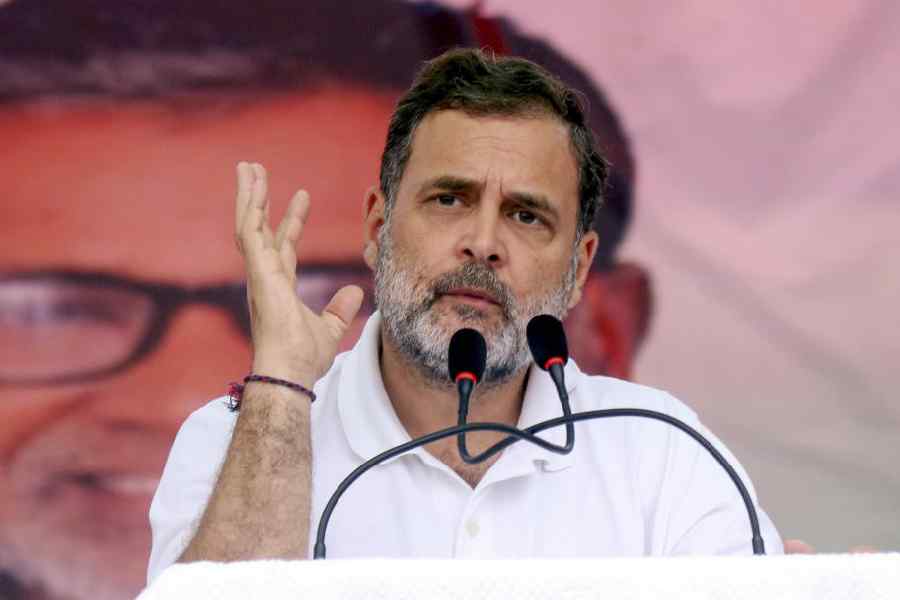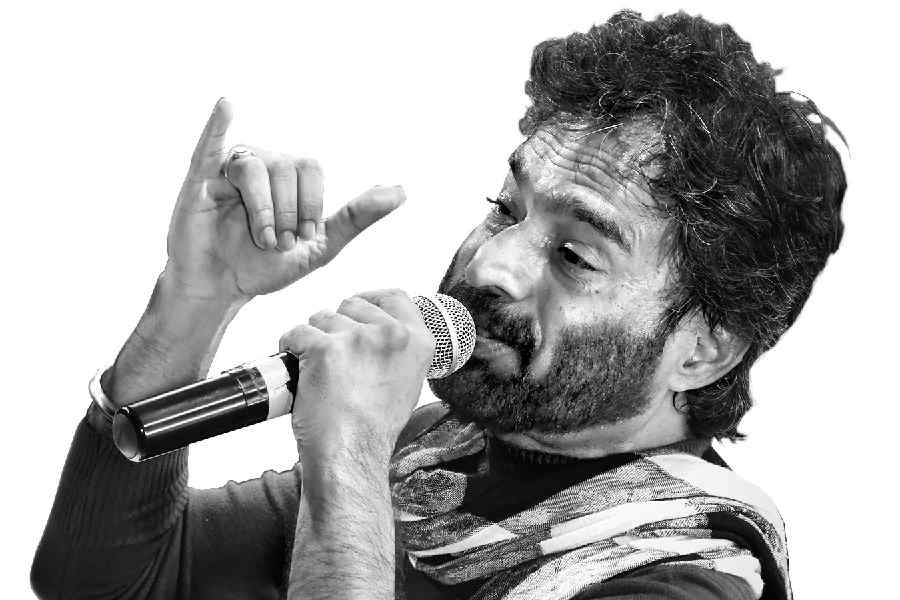Catharsis is an essential element of tragedy. Its function is to evoke pity and fear in the audience and make them identify with the journey of a troubled protagonist. In his latest Netflix special, Vir Das makes catharsis switch genres to have a similar effect.
In applying a tragic device to comedy, Das is both candid and clever in milking his personal plight for an hour-long Netflix special. The result is Fool Volume, a comedic triptych that opens with a tragic admission but develops into a full-throated celebration of its hero.
Shot in a church in London, a stadium in Mumbai, and a club-cum-cellar in New York, Fool Volume begins with Das revealing that he had lost his voice six weeks before filming this show. The first segment of Fool Volume builds the tension that stems from a stand-up comic being deprived of their most powerful weapon, as Das recalls his paraphernalia of solutions — from puja to “white powder” to Adele’s speech therapist.
Everything and everyone seems ripe for an attack, from Churchill to Gen Z to the audience
Fifteen minutes in, the catharsis is already palpable, as the unnerving prospect of not being able to speak in front of thousands is gradually replaced with the joy of rediscovering one’s voice. Das admits he rewrote the entire script for his special, since he could only perform for 35 minutes in the lead up to the shoot. But he also had to be wary of context, given the vastly different cultures of his three locations. His solution? To come up with different punchlines for each crowd.
So London listens to the UK being compared to Joe Biden, New York is mocked about guns, and Mumbai receives a melody composed out of a Hindi swear word!
By now, anyone who has seen even a handful of Das’s viral clips from his previous specials knows that Das thrives in the sweet spot between educating and entertaining. He may not have the sheer satirical force of Kunal Kamra or Varun Grover or the quotidian philosophy of Kanan Gill. But Das’s comedy lends itself to global visibility because he knows how to locate universal themes in peculiarly Indian problems — from family to religion to politics.
Fool Volume follows this template to the tee, as Das goes about punching up, effortlessly switching between subjects and registers. Everything and everyone seems ripe for an attack — Churchill, Hitler and Putin get snide treatment, Gen Z gets “burnt”, the middle class is castigated as “morally bankrupt” and even the audience is called out… for not getting arrested! While ROFL moments are rare, Das makes your jaws do more than their fair share of stretching.
Too curated to allow chaos
Once your eyes and ears get attuned to the intercutting across the three venues, it is hard to get rid of the feeling that Fool Volume has been overscripted. At times, it looks too pretty to be a stand-up show, with its dazzling interplay of light and darkness and its seamless editing. In the Mumbai portions, there is also a ‘ghost light’ that Das operates himself in a bid to ward off nazar. Like Chekhov’s gun, you expect the ghost light to go off at some point to make a larger point, but all it does is reveal Das’s increasingly sharpening jaw line from various angles.
Comedy, at its most powerful, is about moments of spontaneity, confusion, even messiness. Some of the most memorable sections of Das’s For India and Landing (which won him an International Emmy) come in the transitions between jokes, where the audience (and sometimes Das himself) are still processing what hit them. There is a sense of organic chaos that emerges as the through line between Das’s buffet of interests.
Fool Volume, though, is too curated to allow such chaos. It is the only one of Das’s specials where he seems too distracted by the visual language to focus on the spaces between his actual words, the parts where so much of comedy bubbles with possibilities.
Vir Das playing the most predictable version of Vir Das
Since winning an Emmy in 2023 (and then hosting the same awards the year after), Das has become the international reference for Indian comedy. Having always championed himself as the ultimate underdog, Das is now very much the main man. Even the title of his upcoming memoir, The Outsider, rings a bit hollow for someone who is now an ecosystem of his own, complete with directorials.
All this means that Vir Das is his own benchmark. For a comedian, such status brings its own challenges. How do you live up to expectations when your art is fundamentally about subverting them? How radical can you get when you have more to lose with every performance? How much do you push the envelope when you have been labelled by an assortment of critics as India’s finest comedian?
Judging by Fool Volume, Das’s answer is to play the most predictable version of himself. To combine mischief and meaning in a way that feels familiar, even formulaic, but fun. In Fool Volume, Das is not trying to make any grand points about India or the world. He is not even trying to provoke, unlike his sets in Losing It or Ten on Ten. In fact, the most outrageous things that Das says in Fool Volume — one example being “racists are a marginalised community” — tend to lose their zing as one joke segues into another. Instead, Das’s attention is squarely on his own journey, from an illegal immigrant in the US to a global icon.
The artist makes more noise than his art
Of course, Das being Das ensures that his self-indulgence or self-deprecation never feels dull or nauseating. But in keeping himself at the forefront of Fool Volume, both literally and figuratively, Das leaves one pining for the insights that define his greatest hits.
Towards the end of Fool Volume, Das breaks a joke into three parts — the undeniable fact, the premise, and the punchline. He then illustrates this structure at work through three variations where the laughing stock constitutes…his nipples. For a few minutes, Das gives us a flash of his classic self, the fool who can produce laughter from the most unlikely of sources.
And yet, by the time the end credits roll, the overwhelming impression of Fool Volume is not of punchlines, horseplay or an unforgettable audience interaction. It is of Das as all-encompassing — the man who can find his “inner Djokovic”, the man who can turn a kazoo into a character, the man who is too big to fail.
For the first time in Das’s career, the artist makes more noise than his art.











